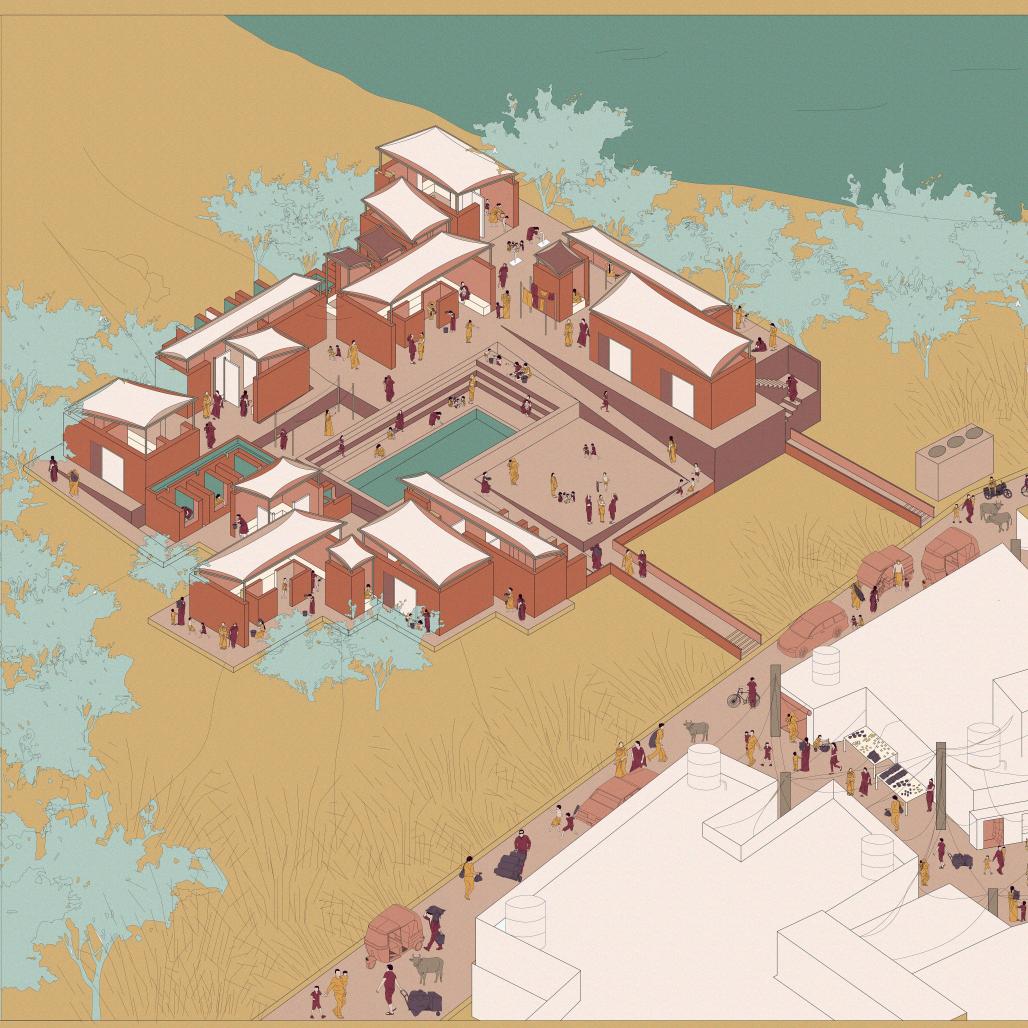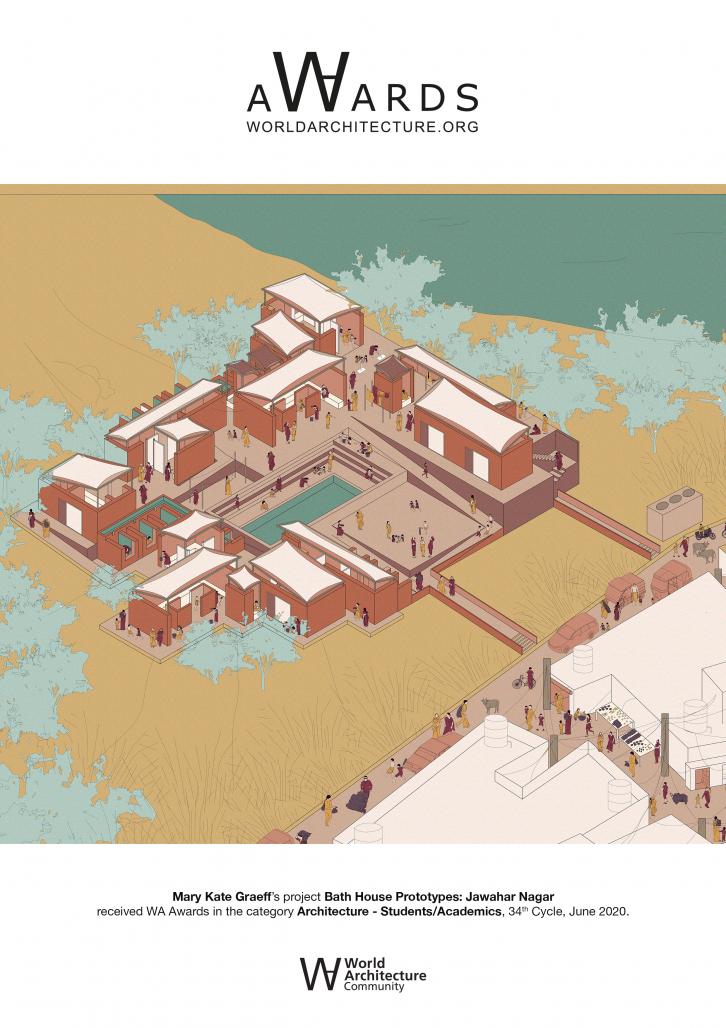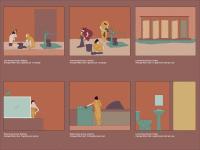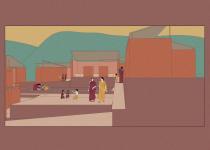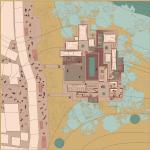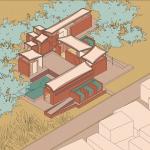The city of Jaipur faces an extreme water shortage, due in part to the insufficient collection of rainwater during monsoon season, and the contamination of the groundwater supply through pollution and illegal wells. As part of the research we conducted on the water systems in Jaipur, we took note of the way people were accessing and using water in their homes and neighborhoods. We documented many cases of people bathing near the communal water source, and the necessity for a more accessible, private, and sanitary space for bathing became obvious.
Drawing on the historic methods used in the city for bringing water down from the mountains, the most logical placement for such a facility is along the base of the Aravali hills, in the space where the edge of the city meets the landscape. On the east side of Jaipur, a large informal settlement borders steep mountain faces, which combines an area of high need and one that has easy access to water. The water will flow from the new catchment systems in the mountains above and will be stored in a series of tanks that will then provide water to the facilities as needed. The water used for bathing and laundry will be collected and a portion will be used to operate the toilets, while the excess is drained into surrounding agricultural fields.
This system provides an opportunity to not only conserve and reuse water used for bathing and laundry purposes, but ensures the safe removal and treatment of contaminated water and reduces the need for illegal wells. The flow of the water accounts for the seasonality of water availability by drawing from cisterns that collect a surplus of water from the mountainous terrain during monsoon season, only 10% of which will be used for the bathing facilities to allow the rest to be repurposed. The arrangement of tanks and structures utilizes the existing topography to allow gravity to dictate the flow of water and reduce the necessary energy for pumping and draining.
Drawing on locally-sourced materials for its efficient construction, this facility provides both a necessary, and socially nurturing, environment for the members of the community. The structures use local stone and fabrics to provide shading from the summer sun while maintaining open ventilation and enabling passive temperature regulation. These bathing facilities are intended to provide not only clean and easy means to shower, but to create a place where women and children can go to take care of daily needs in a safe, relaxing, and socially engaging environment. Men’s and women’s facilities will be separated to ensure privacy but both are located close to the settlement border. The facilities will provide access to not only bathing facilities, but laundry spaces, toilets, and sanitary products.
A combination of flexible private, public, and hybrid spaces within the bath house ensure the space is able to fit the needs of anyone in the community while combining functional comfort with an environmentally proactive attitude towards the climate.
2019
0000
-Range of prototype size, from "small" to "large" withe capacity to serve between 1500 and 3500 people respectively
-Average rainfall in Jaipur in the dry season is 9.5mm and 137.1mm in the monsoon season, averaging an annual total of 597.6mm
-Water gathered from monsoon rains, using only 10% of total rainwater that could be captured from the mountains immediately surrounding, amounting to 18,000 cubic feet of water per month in the dry season and 120,000 cubic feet per month in the monsoon season, and stored and redistributed to supply up to 55,000 cubic feet per month during every month of the year as needed
-A single-facility capacity of 6,300 cubic feet of water would be flushed directly to the sewage treatment system twice monthly
-Multiple storage tanks at each facility with 2,000-3,000 cubic feet of storage capacity each and a built-in, gravity based overflow system
Professors (University of Virginia): Pankaj Vir Gupta and Maria Gonzalez Aranguren
Yamuna River Project Research Fellow: Darcy Engle
Bath House Prototypes: Jawahar Nagar by Mary Kate Graeff in India won the WA Award Cycle 34. Please find below the WA Award poster for this project.
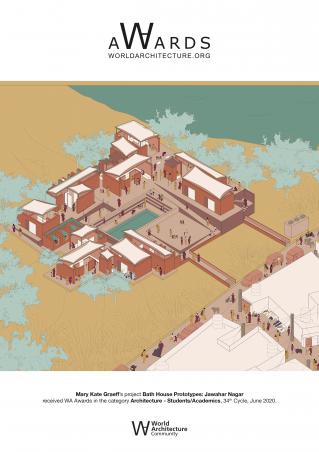
Downloaded 55 times.
